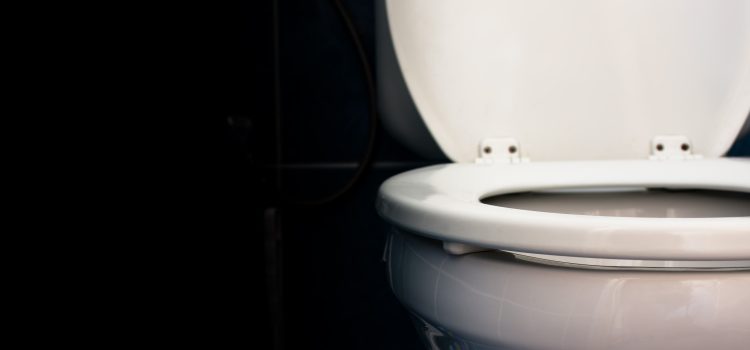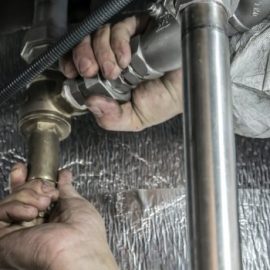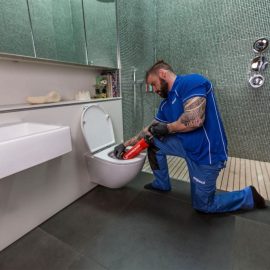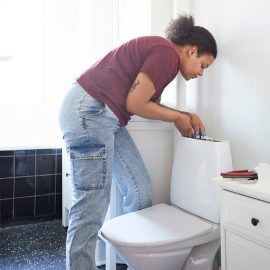
A few months ago, I’m sure I looked like a mentally deranged person. Why? Because I was going nuts with messy clogged toilets.
Fortunately, I discovered a few basic alternatives that saved me a trip to the mental institution.
Do you want to learn more?
#3. A Drain Cleaner

Begin by heating a half-gallon of water. If your toilet clogs rapidly as a result of flushing too much “garbage,” a solution of hot water, baking soda, and vinegar can work just as well as a commercial drain cleaner. (Oh, and it works in half of the situations.)
Boil half a gallon of water, then leave it aside to cool while you fill the toilet bowl with the remaining ingredients.
Keep in mind that at least half a gallon is necessary. A small amount of water will not operate because it lacks the essential force to break through the obstruction. The temperature of the water should not be higher than that of a cup of hot tea you can drink comfortably. Boiling water should not be used since it can fracture china. You want to enhance the temperature of the water that is flowing through or pushing against the obstacle.
Then, pour one cup of baking soda and at least two cups of vinegar into the toilet. Baking soda and vinegar cause a chemical reaction that assists in the elimination of obstructions. Although distilled white vinegar is commonly used, any vinegar can do. The combination will erupt in a frenzy of bubbles.
If you don’t have any baking soda or vinegar on hand, try a few squirts of dish soap in the toilet bowl. The soap may assist in the clearing of the obstruction. It is crucial to note, however, that this method is unlikely to be successful for blockages created by a hard barrier, such as your child’s new toy.
Filling the dish halfway with hot water is the next step. Pour it from the waist down, not straight up to the rim. The force of the water rushing into the basin may help remove the obstruction. Allow the mixture to settle for at least 24 hours. By the morning, the water should have drained.
Note: This DIY drain cleaner should be efficient in eliminating organic debris-caused clogs. If the water still does not flush after the second attempt,, a hard obstruction may be causing the clog. If required, use a wire coat hanger or a drain snake.
#4. Try With A Plumbing Snake
.jpg)
A plumbing snake can be bought or rented.
For those of you who don’t know what a plumbing snake (also known as a “flexible cleaning tool” or “auger”) is,it’s a flexible wire coil that can “slither” around drain bends and can go deeper than a wire A “closet auger,” which is specifically designed to clear toilet obstructions without hurting or breaking the bowl, is the ideal snake. The best snake is a “closet auger,” which is specifically designed to clear toilet blockages without damaging or destroying the bowl. A plumber would most likely utilize a closet auger.
So, here’s what you should do:
Step 1: Insert one end of the snake into the drain. Push down, sending the snake farther into the sewer until you run across an impediment.
Step 2: Twist the snake and push it through the obstruction. The goal is to dismantle the barrier into smaller pieces tiny enough to slide through the pipes. To get past the obstruction, you may need to navigate for a few minutes. After the water has been emptied, flush the toilet to see if it empties as quickly as normal.
Step 3: Reverse the snake phase – it may be necessary to remove the toilet and run the snake in the opposite direction. This is especially true for stubborn clogs that a curious child may have flushed. If the clog is known to be problematic and you are not comfortable removing and replacing the toilet, call a plumber.



